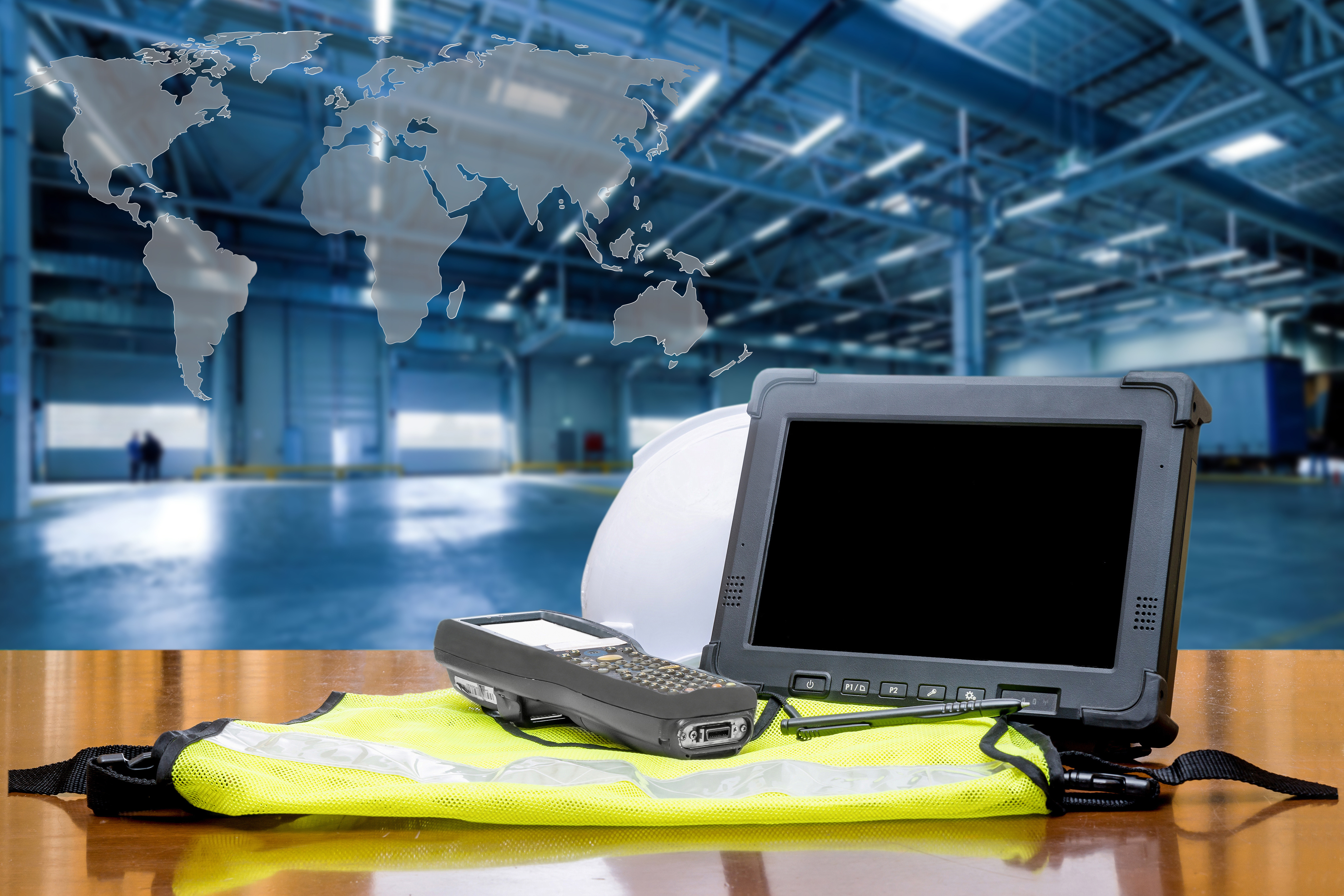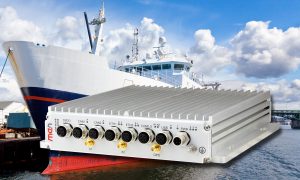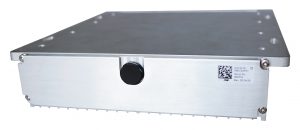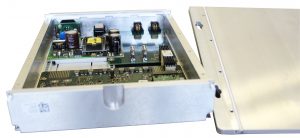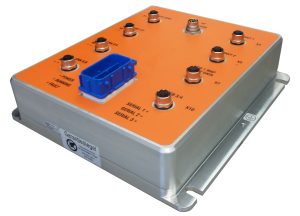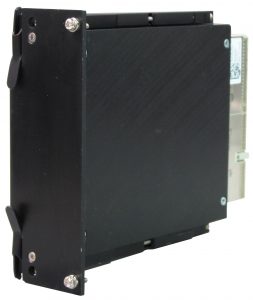Batten down the hatches – and not just at sea
Far away from protected server rooms or automation lines in air-conditioned production halls, embedded computers need to withstand the toughest conditions in modern vehicles and moving machines, or in installations outdoors such as railway lines.
Control systems in mining vehicles need to be protected from dust, heat and shocks of up to 5G; computers at sea, e.g. on oil platforms, are exposed to constant salt spray and moisture (or, of course, oil); systems in busses and trains must be able to withstand constant vibrations and sometimes sharp and rapid temperature fluctuations. Even operator terminals in combine harvesters or hospitals should be able to withstand chemical influences such as pesticides or disinfectants.
All in all, there are three principal areas that are of major importance with regards to rugged computing:
- Extended temperature range: Unless otherwise required by the application, the standard for industrial electronics is -40°C to +85°C, rising to as much as +125°C for near-engine electronics in the automotive sector and even ranging from -55°C to +125°C for aviation and shipping. The railway standard EN 50155 stipulates an operating temperature of -40°C to +70°C – and 10 minutes at up to +85°C in the Tx class.
- Protection against dust, damp and chemicals: The components of the system should generally be conformally coated. Depending on the requirements and the IP protection class, further protection can be provided by sealed housings. IP classes are always made up of two digits. The first stands for protection against foreign bodies (such as dust) and contact; the second stands for protection against water.
- Protection against impact and vibration: Individual components must be screwed in tightly or soldered; moving parts are generally to be avoided. Plug-in cards and adapters have screw-mountable sockets. Robust plug connectors, e.g. M12, that are screwed in tightly and withstand strong vibrations, are available for cable connections.
Other aspects to be considered are protection from electrical interference, electromagnetic compatibility (EMC) and fault-tolerant behavior, e.g. towards short-time power failures, as well as maintenance-free or maintenance-friendly designs that exclude or at least reduce the number of fans and other fault-prone components, for example.
Sealed as standard up to IP65 – Diagnostic system for ships
A good example of the importance of housing tightness in accordance with IP protection classes is that of a diagnostic system for ships and yachts. The system is connected via CAN to the ship’s engine and collects status/diagnostic and error data which are then sent to mobile displays via Wi-Fi and LTE. The ship’s crew, both in the control room and on deck, then use the data for monitoring, remote maintenance and, if necessary, repairs on board.
The system was implemented in a box PC measuring 250 mm x 220 mm x 48.1 mm. In addition to an extended temperature range, flexibility in terms of interface assignment and a wide-range power supply, the most important requirement of the box PC was its impermeability in accordance with IP65 and EMC conformity in line with EN 60945 (Maritime navigation and radiocommunication equipment and systems) and Germanischer Lloyd. As a standard product, the box PC goes beyond the customer-specific requirements of the project, and complies with EN 50155 (Railway) and ISO 7637-2 (Automotive).
Fig. 1: The robust BC50R box PC resulted from a customer project and is now also available as a standard product.
Not completely watertight?
The IP65 class, i.e. complete protection against dust ingress and protection against water jets, was achieved by means of an 8 mm-thick aluminum housing (a wall thickness of 2 mm suffices for standard box PCs), which seals the PC on all sides with screws and silicone-filled contours. The thickness of the housing walls and the number and position of the screw fittings determine the contact pressure that can later be applied to the housing without the contact on the touch points and therefore the impermeability being lost. EMC protection can be achieved through conductive silicone material with silver particles. However, even if the required IP65 protection class is achieved by means of the later contact pressure and surrounding seals on all points of contact, the box is not completely airtight in spite of all this. This is a decisive criterion in which pressure compensation plays a key role. Due to thermal expansion and contraction of the materials caused by temperature fluctuations (or equally by altitude differences in aviation), small amounts of air would be sucked in through the seals, thus bringing moisture into the interior of the housing from where it can no longer escape, however. To prevent this, a pressure compensation valve was installed on the rear of the housing. This ventilates the housing just enough to allow condensation to be kept to a minimum.
Fig. 2: The pressure compensation valve on the rear of the BC50R.
Fig. 3: Inside the BC50R. The 8 mm-thick aluminum parts are tightly sealed with silicone cords and screw fittings.
Higher IP classes (such as IP67, which can withstand brief submersion in water) can be achieved by casting the entire housing – except for a cover with the connector plugs – from a single mold.
Fig. 4: Housing example for IP67. The electronics for the control system of a mining vehicle sit in a “tub”, which is milled from one piece, with a sealed cover. Aluminum die casting offers more cost-effective alternatives.
Protection against external environmental influences:
To protect the housing against external environmental influences, such as chemicals, pesticides or the previously mentioned salt spray, for as long as possible, the right aluminum alloy and/or selection of special protective coatings is required in addition to the appropriate degree of housing impermeability. These are largely standardized, depending on the industry. Smaller parts such as screws are included – if they were made of steel, it would not take long for rust to form.
Additional protection of the electronics from moisture through (conformal) coating is not required within a housing with a correspondingly high IP level. However, it may be required depending on the industry and application. For example, EN 50155 prescribes coating of all components – regardless of the housing in which they are located.
The right connector
The connectors on the front also pose a challenge when it comes to meeting the IP class. Unused interfaces can be protected using appropriate cover caps. For all interfaces used, the plug connection, along with the connecting cables themselves, must be sealed in such a way that it also conforms to the IP class. Interface connectors such as USB, DisplayPort or RJ45, which will be familiar from the consumer or industrial sectors, are out of the question in this respect. Some of these connectors are available in many sealing classes – but cost up to 10 times more than usual robust connectors for harsh environments and even then require special designs. This usually results in M12 connectors being chosen – as in the case of the box PC on the high seas. These connectors can be sealed up to IP76 and even work reliably under severe impacts and vibrations. The similarly round MIL/Aero-compliant connectors, which are familiar and required in the aviation and military sectors, are even more resistant.
So as not to be subject to any restrictions on input/output when using M12 connectors, the pin assignment must be defined by the manufacturer and written into the user manual. The connections for the various protocols run via appropriate adapter cables – which is where the next trick comes in. To port from USB 3.0 to M12, it is important to note, for example, that due to the high speed of USB 3.0 (and the lack of standardization, as is the case with Ethernet connections for M12 connectors), the adapter cables contain twisted pairs which provide better protection against electrical and magnetic interference fields than parallel conductors.
Where does the waste heat go?
Tightly sealed embedded systems inevitably raise the issue of heat dissipation. If there is merely a small valve ensuring pressure compensation – and thus virtually no air circulation – how can the electronics be cooled? The solution is conduction cooling, which is also the reason why a heat-conducting aluminum housing is used in all robust designs. For this reason, it is essential that components that produce heat are thermally connected to the housing, as a result of which the device itself becomes the heat sink. This technology is not limited to box PCs – it can also be implemented with 19″ components (CompactPCI / CompactPCI Serial) or COM Express modules (Rugged COM Express).
Fig. 5: Sealed and suitable for conduction cooling. CompactPCI card and Rugged COM Express module in a CCA frame.
Angela Hauber, Marketing Communications & Public Relations, MEN Mikro Elektronik GmbH


